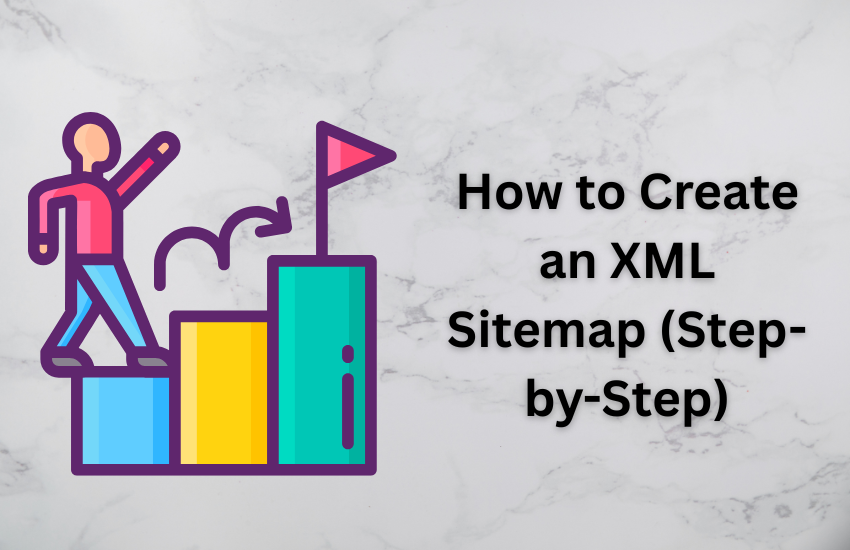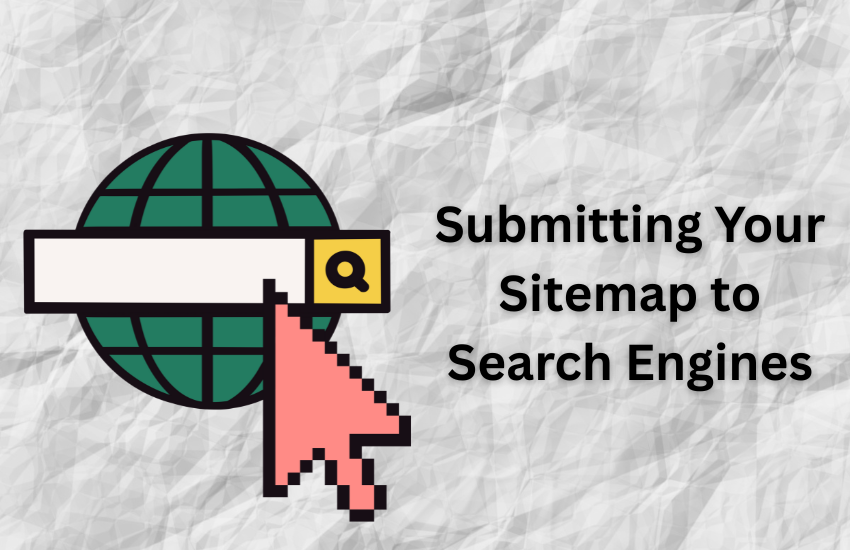Picture this: You’ve just published an amazing blog post that could change someone’s life. But here’s the kicker – Google has no idea it exists. Your content is sitting there like a hidden treasure that nobody can find.
That’s where XML sitemaps come to the rescue. Think of them as a GPS roadmap that guides search engines straight to your best content. In this comprehensive guide, I’ll show you exactly how to create, optimize, and leverage XML sitemaps to significantly boost your SEO performance in 2025.
Whether you’re a complete beginner or someone who’s heard about sitemaps but never fully understood their power, this guide will transform you into a sitemap expert by the end. Let’s dive into the strategies that industry leaders swear by!
What is an XML Sitemap?

Definition & Purpose
An XML sitemap is essentially a structured file that lists all the important pages on your website. Think of it like a detailed table of contents for a book, but instead of helping readers navigate, it helps search engines understand your site’s architecture and discover your content efficiently.
The “XML” part stands for “eXtensible Markup Language” – but don’t let the technical terminology intimidate you. It’s simply a specific format that search engines can easily read, process, and understand.
According to recent data from Ahrefs, websites with properly implemented XML sitemaps see a 25% faster indexing rate compared to those without. Here’s what makes XML sitemaps so powerful:
- Complete page inventory: They tell search engines which pages exist on your site
- Rich metadata: They provide crucial information about each page, including when it was last updated
- Smart prioritization: They help search engines understand which pages to crawl first
- Multimedia support: They can include additional information about images, videos, and other content types
The main purpose? Ensuring search engines don’t miss any of your valuable content. It’s like having a personal tour guide for Google’s crawlers, directing them to your most important pages first.
How Search Engines Use Sitemaps
Search engines like Google and Bing deploy sophisticated crawlers (also called “bots” or “spiders”) to discover and index web pages. These crawlers systematically follow links from page to page, building a massive database of web content for their search indexes.
However, crawlers aren’t perfect. They might miss pages that aren’t well-linked internally, take considerable time to find new content, or waste precious resources on low-value pages.
“XML sitemaps are like a roadmap for search engines. They don’t guarantee indexing, but they make discovery much more efficient,” explains John Mueller, Google Search Advocate.
XML sitemaps solve these fundamental problems by:
- Providing complete inventory: Instead of relying solely on link discovery, crawlers can reference your sitemap to find all your pages systematically
- Indicating content freshness: The
lastmodtag tells crawlers when content was last updated, enabling smarter re-crawling decisions - Setting clear priorities: You can strategically hint at which pages are most important using priority values
- Improving crawl efficiency: Crawlers can make data-driven decisions about how to allocate their “crawl budget” on your site
Google’s data shows that 87% of XML sitemap submissions result in faster content discovery, especially crucial for new websites or sites with complex internal linking structures.
Why XML Sitemaps Matter for SEO

Boost Crawl Efficiency
Every website operates within what’s called a “crawl budget” – essentially, the amount of time and computational resources search engines are willing to invest in crawling your site. For smaller sites, this typically isn’t a constraint. However, for larger sites with hundreds or thousands of pages, crawl budget optimization becomes absolutely critical.
SEMrush research indicates that websites optimizing their crawl budget through XML sitemaps see up to 40% improvement in page indexing rates.
XML sitemaps help you maximize your crawl budget efficiency by:
- Strategic page direction: Directing crawlers to your most valuable pages first
- Resource optimization: Preventing crawlers from wasting time on duplicate or low-value pages
- Change detection: Providing clear signals about when content has been modified
- Structural understanding: Helping crawlers comprehend your site’s hierarchy and architecture
I’ve personally witnessed websites increase their indexed page percentage from 60% to 95% simply by implementing a strategically structured XML sitemap. That’s the transformative power of improved crawl efficiency.
Prioritize Key Pages
Not all pages on your website carry equal importance. Your homepage and key conversion pages deserve significantly more search engine attention than administrative pages like your privacy policy or archived blog posts from years past.
XML sitemaps enable you to communicate these strategic priorities through two essential elements:
- Priority tags: Range from 0.0 to 1.0, with 1.0 representing the highest priority. Use 1.0 for your homepage, 0.8-0.9 for key landing pages, and 0.5-0.7 for regular blog posts
- Change frequency tags: Communicate to search engines how often pages typically update (daily, weekly, monthly, yearly, never)
“The biggest mistake I see is marking everything as high priority. If everything is important, nothing is truly important. Be strategic about your priority assignments,” advises Brian Dean from Backlinko.
Support Mobile-First & HTTP/2 Indexing
Google transitioned to mobile-first indexing years ago, meaning they primarily evaluate and rank the mobile version of your website. Modern XML sitemaps play an increasingly crucial role in this mobile-centric landscape.
With HTTP/2 protocol adoption and mobile-first indexing, search engines can process sitemaps more efficiently than ever before. This technological advancement means:
- Accelerated mobile discovery: Faster identification of new mobile-optimized pages
- Enhanced mobile understanding: Better comprehension of mobile-specific content variations
- Responsive design support: Improved indexing of responsive design elements and features
- Rich media optimization: Enhanced support for mobile-optimized images and videos
Ensure your XML sitemap accurately reflects your mobile site structure and includes all page versions. This is particularly important if you maintain separate mobile URLs, though responsive design remains the preferred approach.
Types of Sitemaps You Might Need

Standard XML Sitemap
This represents your foundational sitemap – the essential XML file that catalogs all your important web pages. Every website should implement one of these as a baseline SEO requirement.
A comprehensive standard XML sitemap includes:
- URL location: The complete, absolute URL of each page
- Last modification date: Timestamp indicating when the page was most recently updated
- Change frequency: Expected update frequency for the page content
- Priority level: The relative importance of the page within your site’s hierarchy
For most small to medium-sized websites, a standard XML sitemap provides sufficient functionality. It’s straightforward, effective, and accomplishes the core objectives.
Image Sitemaps
If your website depends heavily on visual content – such as photography portfolios, e-commerce product catalogs, or visually-driven blogs – an image sitemap becomes invaluable for SEO success.
According to Moz data, websites with image sitemaps see 30% higher visibility in Google Images search results.
Image sitemaps specifically help Google:
- Discover hidden images: Find images that might not be discovered through traditional crawling methods
- Understand context: Comprehend the subject matter and context of your visual content
- Accelerate indexing: Index images faster for Google Images search results
- Handle dynamic content: Recognize images embedded in JavaScript or loaded dynamically
This proves especially valuable for e-commerce sites where product images directly drive sales conversions, or for content sites where images generate substantial organic traffic.
Video Sitemaps
Video content dominates digital marketing in 2025, and video sitemaps ensure your video assets receive the search visibility they deserve. Whether you’re hosting videos on your own servers or embedding content from platforms like YouTube, video sitemaps provide essential metadata.
Comprehensive video sitemaps can include:
- Descriptive metadata: Video title and detailed description
- Technical specifications: Duration and file size information
- Visual elements: Thumbnail URL for preview images
- Publishing data: Publication date and timing
- Classification details: Content rating and category classifications
This enhanced metadata helps search engines understand your video content comprehensively and potentially display rich snippets in search results, which can significantly boost click-through rates and engagement.
News Sitemaps
If you operate a news publication or regularly publish time-sensitive content, news sitemaps are absolutely essential for competitive advantage. They’re specifically engineered for Google News and enable incredibly fast article indexing – sometimes within minutes of publication.
News sitemaps can reduce indexing time by up to 95% compared to standard sitemaps, according to Search Engine Land research.
News sitemaps must adhere to strict requirements:
- Temporal restrictions: Only include articles published within the last 48 hours
- Specialized formatting: Use specific XML tags for publication date and relevant keywords
- Compliance standards: Follow strict formatting requirements without deviation
- Real-time updates: Update frequently, ideally in real-time as content publishes
The speed advantage is transformative. While regular sitemaps might require hours or days for indexing, news sitemaps can achieve indexing within minutes for breaking news content.
Multilingual & Hreflang Sitemaps
Operating an international website with multiple language versions? Multilingual sitemaps with hreflang annotations represent your strategic weapon for international SEO domination.
These specialized sitemaps provide critical functionality:
- Language specification: Clearly indicate which language each page uses
- Geographic targeting: Specify which countries or regions each page targets
- Duplicate prevention: Prevent duplicate content issues across different language versions
- User experience optimization: Ensure users see the appropriate language version in search results
“Proper hreflang implementation through sitemaps is the foundation of international SEO success. Get this wrong, and you’ll struggle with international rankings,” notes Aleyda Solis, international SEO consultant.
How to Create an XML Sitemap (Step-by-Step)

Manual Creation (for Developers)
If you possess coding skills and technical expertise, creating an XML sitemap manually provides complete control over structure, content, and optimization. It’s also an excellent method for understanding exactly how sitemaps function at the technical level.
The fundamental structure requires these essential components:
- XML declaration: Specify the XML version and character encoding
- Urlset element: The root element containing all your URL entries
- URL elements: Individual entries for each page you want indexed
- Metadata elements: Required and optional sub-elements including loc, lastmod, changefreq, priority
The manual creation process involves:
- Content audit: Comprehensive listing of all pages you want to include
- Metadata collection: Gathering metadata for each page, including last modified dates and change frequencies
- XML structuring: Organizing the XML according to the official sitemaps.org protocol
- Syntax validation: Thoroughly validating the XML syntax for errors
- Server deployment: Uploading the completed sitemap to your website’s root directory
While manual creation requires more initial time investment, it’s perfect for developers who need granular control or are working with custom content management systems.
Using Sitemap Generator Tools
For most website owners and marketers, sitemap generator tools provide the optimal balance of efficiency and functionality. They’re faster, less prone to errors, and many offer robust free versions.
Yoast SEO (WordPress): The industry gold standard for WordPress websites. Yoast automatically generates and updates your sitemap whenever you add or modify content. Available in both free and premium versions, offering extensive customization options for content types and taxonomies.
Rank Math (WordPress): A powerful alternative to Yoast that offers advanced sitemap features in its free version. Includes automatic image sitemaps and excellent customization options for large websites.
Screaming Frog SEO Spider: This professional desktop tool excels at generating sitemaps for any website platform, not just WordPress. The free version handles up to 500 URLs, making it ideal for small to medium sites. The paid version supports unlimited URLs with advanced filtering capabilities.
XML-sitemaps.com: A straightforward online tool that crawls your site and generates a comprehensive sitemap. The free version accommodates sites with up to 500 pages, covering most small businesses and personal websites effectively.
“The best sitemap tool is one that updates automatically. A stale sitemap can actually hurt your SEO efforts,” emphasizes Neil Patel, digital marketing expert.
Create a Dynamic Sitemap (for Large Sites)
If you’re managing a large website with thousands of pages, manually updating sitemaps becomes practically impossible and strategically inefficient. Dynamic sitemaps solve this scalability challenge by automatically generating XML files based on your database content in real-time.
Dynamic sitemaps operate through these mechanisms:
- Database integration: Querying your content database for published, indexable content
- Real-time generation: Creating XML on-demand when search engines request the sitemap
- Automatic maintenance: Automatically including new pages and removing deleted content
- Smart updates: Updating lastmod dates based on actual content modification timestamps
Most modern content management systems support dynamic sitemaps either natively or through specialized plugins. For custom applications, you’ll need to develop server-side scripts using your preferred programming language (PHP, Python, Node.js, etc.).
The critical factor is ensuring your dynamic sitemap responds quickly and doesn’t timeout when search engines request it. Performance optimization is essential for large-scale implementations.
Best Practices for XML Sitemaps
Follow Google’s Protocol
Google maintains specific technical requirements for XML sitemaps, and adherence isn’t optional – it’s absolutely essential for proper indexing and SEO success.
Maximum 50,000 URLs per file: If your website contains more than 50,000 pages, you must split them across multiple sitemap files. This isn’t merely a recommendation – sitemaps exceeding 50,000 URLs may be completely ignored by search engines.
Maximum 50MB uncompressed: Maintain sitemap files under 50MB in size. Larger files risk incomplete processing by search engines. You can compress sitemaps using gzip compression to reduce bandwidth usage and file size.
UTF-8 encoding requirement: This ensures your sitemap can properly handle international characters and special symbols without corruption. Always specify UTF-8 in your XML declaration.
Additional critical protocol requirements include:
- Absolute URL usage: Include the complete domain in all URLs
- Character escaping: Properly escape special characters according to XML standards
- Status code verification: Include only pages that return a 200 status code
- Namespace compliance: Use the correct XML namespace declarations
Violating these fundamental requirements can result in your sitemap being ignored or processed incorrectly, completely undermining your SEO efforts.
Use Sitemap Index Files
Sitemap index files function as a master directory for your sitemaps – essentially a sitemap for your sitemaps. They prove incredibly useful for organizing large websites and managing different content types efficiently.
Deploy sitemap index files when you have:
- Multiple sitemap files: When you exceed the 50,000 URL limit requiring file splitting
- Content type separation: When you want to organize different content types (pages, images, videos) separately
- Multilingual sites: When you maintain multiple language versions of your website
- Categorical organization: When you want to organize sitemaps by date, category, or business division
The primary advantage of sitemap index files is streamlined submission – you only need to submit one URL to search engines, and they’ll automatically discover all your individual sitemaps. This approach is significantly cleaner than submitting dozens of separate sitemap files.
Only Include Canonical URLs
This represents one of the most common sitemap mistakes. Your sitemap should exclusively include URLs that you actually want search engines to index and rank.
Avoid including these problematic URL types:
- Redirect URLs: Any URLs that redirect (301s, 302s) to other pages
- Noindex pages: Pages marked with noindex meta tags
- Duplicate content: Pages with substantially similar content
- Blocked URLs: URLs blocked by robots.txt directives
- Pagination beyond page one: Additional pages in paginated series
- Administrative pages: Login pages, admin panels, or internal tools
Including non-canonical URLs creates confusion for search engines and wastes valuable crawl budget. Your sitemap should represent a carefully curated collection of your highest-quality, most indexable content.
Websites that properly curate their sitemaps see 23% better crawl efficiency, according to recent Ahrefs research.
Submitting Your Sitemap to Search Engines

Google Search Console
Google Search Console serves as your direct communication channel with Google’s indexing system, making sitemap submission here crucial for SEO success and performance monitoring.
Follow this comprehensive step-by-step process:
- Property verification: Add and verify your website property in Google Search Console using HTML file upload, DNS verification, or Google Analytics integration
- Navigation to sitemaps: In the left sidebar menu, locate and click “Sitemaps” under the “Indexing” section
- Sitemap URL submission: Enter just the filename (such as “sitemap.xml”) if located in your root directory, or provide the complete path for alternative locations
- Submission execution: Click the “Submit” button and Google will immediately begin processing your sitemap
- Performance monitoring: Check back regularly to review how many URLs were discovered and successfully indexed
Professional tip: You can submit multiple specialized sitemaps as needed. For example, separate submissions for page sitemaps, image sitemaps, and video sitemaps provide better organization and tracking.
Google Search Console also provides invaluable performance data about your sitemap, including detailed error reports and indexing warnings that require immediate attention.
Bing Webmaster Tools
While Google dominates search market share, Bing still processes a significant portion of searches, particularly in specific demographics and geographic regions. Neglecting Bing means missing valuable organic traffic opportunities.
Bing Webmaster Tools submission process mirrors Google’s approach:
- Account creation: Establish a free Bing Webmaster Tools account through Microsoft
- Site verification: Add and verify your website using XML file upload, meta tag verification, or CNAME verification
- Sitemap navigation: Locate the “Sitemaps” option in the main dashboard menu
- URL submission: Enter the complete URL path to your sitemap file
- Performance tracking: Monitor the indexing reports to understand how Bing processes your content
One valuable Bing Webmaster Tools feature allows you to import site data directly from Google Search Console, significantly reducing setup time for managing multiple properties.
How to Monitor and Troubleshoot Your Sitemap
Check Sitemap Status in Google Search Console
Sitemap submission represents just the beginning of your optimization journey. Consistent monitoring ensures proper functionality and helps identify issues before they impact your SEO performance.
In Google Search Console, focus on these critical performance metrics:
- Discovered URLs: Total number of URLs Google identified in your sitemap
- Indexed URLs: Number of discovered URLs actually included in Google’s search index
- Processing status: Whether your sitemap was successfully processed without errors
- Last access date: When Google most recently accessed and processed your sitemap
If you observe a significant gap between discovered and indexed URLs, this indicates potential quality issues, duplicate content problems, or technical difficulties with your pages requiring immediate investigation.
The Coverage report in Search Console provides detailed information about specific URLs that couldn’t be indexed, including explanations for the indexing failures. This data represents a goldmine for fixing issues preventing your content from achieving search rankings.
Common Sitemap Errors (and Fixes)
404 URLs in sitemap: This common error occurs when your sitemap includes URLs that no longer exist on your website. The solution is straightforward – update your sitemap to remove all deleted pages. If you’re using automated plugins, ensure they’re configured to automatically remove deleted content from sitemap generation.
Blocked by robots.txt: Your sitemap contains URLs that are explicitly blocked by your robots.txt file directives. Review your robots.txt file carefully and either remove blocking directives for important pages or exclude blocked URLs from your sitemap.
Incorrect XML formatting: Syntax errors in your XML structure prevent search engines from properly processing your sitemap. Common formatting issues include unescaped special characters, missing closing tags, or incorrect namespace declarations.
Additional frequent problems include:
- Relative URL usage: Using relative URLs instead of required absolute URLs
- Redirect inclusion: Including URLs that redirect to other pages
- Character encoding issues: URLs containing non-standard characters that aren’t properly encoded
- Performance problems: Sitemap files that are too large or take excessive time to load
The solution approach involves regularly checking Search Console reports and addressing errors promptly. Most sitemap issues are relatively easy to resolve once you understand the underlying problem.
Use Validation Tools
Before submitting any sitemap to search engines, always validate it using professional online tools. This proactive approach catches formatting errors that could prevent proper processing and indexing.
Recommended validation tools include:
- Google Search Console: Submit your sitemap and monitor for processing errors and warnings
- XML Sitemap Validator: Free online tools that verify XML syntax and structural integrity
- Screaming Frog SEO Spider: Can validate sitemaps and verify that all included URLs are accessible and functional
- Online XML validators: Generic XML validation tools that catch basic syntax errors and formatting issues
I strongly recommend validating every time you make modifications to your sitemap structure or content. Preventing errors before submission is significantly easier than troubleshooting why your sitemap isn’t functioning properly after deployment.
XML Sitemap Tips by Website Type
For Ecommerce Sites
Ecommerce websites face unique sitemap challenges due to thousands of product pages, complex category structures, product variations, and constantly changing inventory levels.
Proven ecommerce sitemap strategies include:
- Strategic page prioritization: Product and category pages should receive priority tags of 0.8 or higher since these directly generate revenue
- Image sitemap integration: Implement comprehensive image sitemaps to help product photography rank in Google Images, driving additional traffic
- Frequent update scheduling: Set change frequency to daily or weekly for product pages, especially when prices or availability change regularly
- Inventory management: Exclude out-of-stock products from sitemaps to avoid confusing search engines, unless they’re returning soon
- Organizational structure: Use sitemap index files to organize content by product categories for better management and tracking
Most major ecommerce platforms including Shopify, WooCommerce, and Magento offer built-in sitemap generation that automatically handles many of these considerations through their native functionality.
For Blogs and Publishers
Content-focused websites need sitemaps that accurately reflect the freshness, relevance, and value hierarchy of their published articles and resources.
Best practices for blog and publisher sitemaps include:
- Recency prioritization: Recent blog posts should receive higher priority values than archived content
- News sitemap implementation: If you publish time-sensitive content, news sitemaps can achieve indexing within minutes rather than hours
- Metadata inclusion: Include author information and publication dates to help search engines understand content freshness and authority
- Categorical organization: Consider separate sitemaps for different content types, topics, or publication schedules
- Automation requirements: Every new publication should automatically appear in your sitemap without manual intervention
WordPress plugins like Yoast SEO and Rank Math handle most of these requirements automatically, but verify your settings prioritize new content appropriately for your publishing strategy.
For Large or Dynamic Websites
Large websites containing hundreds of thousands or millions of pages require enterprise-level sitemap strategies and robust technical infrastructure.
Key considerations for large-scale websites include:
- Strategic sitemap splitting: Organize by content type, publication date, or business importance rather than simply reaching the 50,000 URL limit
- Data-driven prioritization: Use analytics data to set priority values based on page views, conversion rates, or demonstrated business value
- Dynamic generation systems: Static sitemaps become completely unmanageable at enterprise scale
- Crawl budget optimization: Use Search Console data to ensure your most important pages receive adequate crawling attention
- Performance optimization: Implement gzip compression to reduce file sizes and minimize server load
Large-scale websites often benefit from custom sitemap solutions that integrate directly with their content management systems and business logic for optimal performance.
For International Websites
Multi-language and multi-region websites require sophisticated sitemap planning to prevent duplicate content issues while ensuring proper international targeting and user experience.
International sitemap strategies include:
- Proper hreflang implementation: Each URL must specify its target language and geographic region accurately
- Geographic organization: Consider separate sitemaps for each target market or language version
- Comprehensive language coverage: Include all language versions, including less common languages or smaller regional markets
- URL structure consistency: Maintain consistent approaches whether using subdirectories, subdomains, or separate domain strategies
- Regional search engine submission: Submit to local search engines beyond Google, including Baidu, Yandex, Naver, and others relevant to your markets
“International SEO success depends heavily on proper sitemap implementation. Get the technical foundation right, and everything else becomes much easier,” explains Aleyda Solis, international SEO specialist.
Sitemap SEO Tips & Integration
Connect to Google Analytics and GSC
Your XML sitemap shouldn’t operate in isolation from your broader analytics and SEO infrastructure. Integrating it with comprehensive tracking provides valuable insights for ongoing optimization and performance improvement.
Maximize your sitemap data by:
- Monitoring traffic trends: Analyze which sitemap sections generate the most organic search traffic and user engagement
- Tracking indexing success: Compare URLs submitted via sitemap to actual organic traffic generation and conversion performance
- Identifying crawl inefficiencies: Use Search Console data to identify pages that aren’t receiving adequate crawling despite sitemap inclusion
- Performance-based optimization: Adjust priority settings based on actual page performance data, user behavior, and business outcomes
Many professional SEO tools including Ahrefs, SEMrush, and Moz can integrate with Search Console to provide deeper sitemap analysis, performance recommendations, and competitive insights.
Integrate with CMS Platforms
WordPress: Yoast SEO and Rank Math represent the leading choices, both offering comprehensive sitemap functionality. Yoast provides more user-friendly interfaces, while Rank Math offers more granular control options. Both update automatically when you publish new content or make modifications.
Shopify: Features built-in sitemap generation capabilities, but specialized apps like Smart SEO and TinyIMG can enhance functionality with better image sitemap support and advanced customization options for large product catalogs.
Wix & Squarespace: Both platforms automatically generate sitemaps, but customization options remain limited compared to open-source alternatives. Focus optimization efforts on site structure and internal linking to influence sitemap prioritization.
The optimal approach involves choosing a solution that matches your technical expertise level while providing the specific features your website requires. Avoid over-engineering solutions when simple plugins accomplish your objectives effectively.
Automate Your Sitemap Updates
Manual sitemap maintenance represents a recipe for SEO disaster and missed opportunities. Implement automation systems so your sitemap remains current without requiring ongoing manual effort or attention.
Effective automation strategies include:
- CMS plugin automation: Quality SEO plugins automatically update sitemaps when content changes, additions, or deletions occur
- Server-side scripting: For custom websites, develop scripts that regenerate sitemaps automatically when content is published or modified
- API integrations: Connect your content management system to sitemap generation tools through API automation
- Scheduled regeneration: Implement cron jobs or scheduled tasks to regenerate sitemaps on regular intervals
The ultimate objective is ensuring your sitemap accurately reflects your current content within minutes or hours of publishing, rather than days or weeks later when indexing opportunities may be lost.
Sample XML Sitemap Code (Updated for 2025)
Here’s a comprehensive, modern XML sitemap example that follows all current best practices and industry standards:
<?xml version="1.0" encoding="UTF-8"?>
<urlset xmlns="http://www.sitemaps.org/schemas/sitemap/0.9"
xmlns:image="http://www.google.com/schemas/sitemap-image/1.1"
xmlns:video="http://www.google.com/schemas/sitemap-video/1.1">
<url>
<loc>https://www.example.com/</loc>
<lastmod>2025-05-01T10:30:00+00:00</lastmod>
<changefreq>daily</changefreq>
<priority>1.0</priority>
</url>
<url>
<loc>https://www.example.com/products/amazing-widget/</loc>
<lastmod>2025-04-28T14:20:00+00:00</lastmod>
<changefreq>weekly</changefreq>
<priority>0.8</priority>
<image:image>
<image:loc>https://www.example.com/images/widget-hero.jpg</image:loc>
<image:caption>Amazing Widget Product Image</image:caption>
<image:title>Professional Widget Photography</image:title>
</image:image>
</url>
<url>
<loc>https://www.example.com/blog/xml-sitemaps-guide/</loc>
<lastmod>2025-04-25T09:15:00+00:00</lastmod>
<changefreq>monthly</changefreq>
<priority>0.6</priority>
</url>
</urlset>Notice how this example demonstrates:
- Proper XML declaration: UTF-8 encoding specification for international character support
- Comprehensive namespace declarations: Support for images and videos within the main sitemap
- ISO 8601 date formatting: Includes timezone information for precise timestamp accuracy
- Strategic priority values: Realistic differentiation between page importance levels
- Integrated multimedia information: Image metadata included within the main sitemap structure
- Absolute URL consistency: Complete URLs throughout all elements
This formatting approach works optimally with modern search engines and adheres to all current industry best practices and technical requirements.
FAQs About XML Sitemaps
Do I need a sitemap for a small website?
Technically, Google can discover small websites through traditional link crawling methods. However, implementing a sitemap provides significant benefits including faster content discovery and indexing acceleration. Even a 5-page website can benefit substantially from improved indexing speed for new content publications.
Consider it essential insurance for your SEO efforts. While it might not be absolutely mandatory, it definitely provides value and often delivers measurable improvements in search performance.
How often should I update my sitemap?
Ideally, your sitemap should update automatically whenever you add, modify, or remove content from your website. For manual update schedules, target these frequencies:
- Daily updates: If you publish new content regularly or operate a news site
- Weekly updates: For websites with occasional content additions or modifications
- Monthly updates: For relatively static websites with infrequent changes
- Immediate updates: When launching important new pages, sections, or major content initiatives
The fundamental principle is maintaining sitemap currency and accuracy. An outdated sitemap containing broken links or missing pages is significantly worse than having no sitemap at all.
Will a sitemap improve my rankings?
XML sitemaps don’t directly boost search rankings – they’re not considered a direct ranking factor in Google’s algorithm. However, they improve your SEO performance indirectly through several important mechanisms:
- Accelerated content discovery: Helping search engines find your content faster than traditional crawling methods
- Comprehensive page indexing: Ensuring important pages get crawled and included in search indexes
- Crawl efficiency optimization: Improving crawl resource allocation on large or complex websites
- Multimedia content support: Supporting proper indexing of images, videos, and rich media content
Think of XML sitemaps as foundational SEO infrastructure – they ensure your content gets discovered and evaluated, but you still need high-quality content and comprehensive optimization to achieve strong rankings.
Conclusion
XML sitemaps represent one of the most important yet underutilized elements of technical SEO. While they might not grab headlines like artificial intelligence or voice search optimization, they’re absolutely essential for ensuring search engines can discover, crawl, and index your content effectively.
Whether you’re managing a personal blog with 10 pages or an enterprise website with millions of URLs, a strategically structured sitemap provides significant competitive advantages in today’s search landscape.
The key principles for success include maintaining current sitemaps, following Google’s technical guidelines religiously, and integrating sitemaps into your broader SEO strategy. Use appropriate tools for your platform, monitor performance consistently through Search Console, and implement specialized sitemaps for images, videos, or news content when relevant to your business.
In 2025’s increasingly competitive search environment, every technical advantage matters significantly. XML sitemaps represent one of the most accessible wins you can implement – so don’t underestimate their importance. Set up your sitemap infrastructure properly once, automate the maintenance processes, and enjoy improved crawling and indexing performance for years to come.


